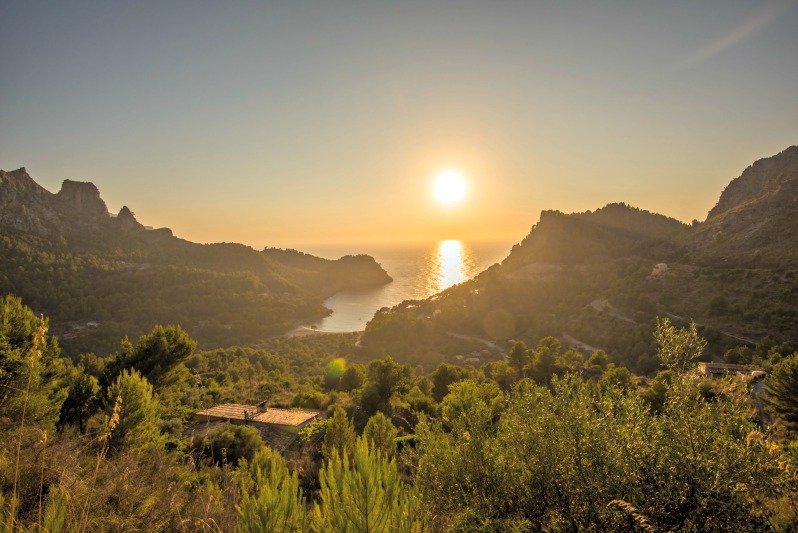I was born in the Mediterranean, and spent every summer of my childhood playing on the Spanish beach. In my memories, it was paradise.
I have no memories whatsoever of having to “protect” myself “against” the sun by putting thick layers of sunscreen on my skin every morning before heading to the beach. Nor do I remember ever having suffered sunburn or sunstroke. There were two rules: avoid the hottest hours of the day, and enjoy a good siesta.
One day, all of a sudden, the TV news announced that we had to be protected from the harmful effects of the sun, which were many. Over time, this huge psychosis was created to convince people it was best to stay at home or only go out if equipped with and armour of creams and sprays. Like most, my family went with the hype and started using creams, thinking we were much better protected, and therefore, exposing ourselves to the sun much longer than we ever did before.
Also today, advertising campaigns are based on fear, continuing to show us the sun as the number one enemy of the skin. And yet, nothing is further from reality.
Therefore I decided to write this blogpost to:
- return to the solar star the reputation it deserves.
- give you some tips so that you can enjoy the sun and all of its benefits without fear.
Better education, more common sense, and less “protection”
Without sun and sunshine there, would be no life on our beautiful planet.
For centuries the virtues of heliotherapy were known to treat bone diseases such as rickets, skin problems, and certain diseases of infectious nature. The sun is a nutrient for our bodies. Our ancestors have lived for thousands of years without sunscreen!
Ultraviolet rays are essential for a large number of vital processes. One of them is the synthesis of vitamin D which is essential for:
- Efficient absorption of calcium and maintaining strong bones
- The proper functioning of the body’s organs
- A strong immune system
- Preventing the degeneration of cognitive function
When done in the right way, sun exposure is not only safe, but necessary for optimal health. And the solution to avoid sun damage is not in sunscreens.
The right dose, recommendations
A healthy dose of sunshine depends on several factors:
- Latitude and altitude of your geographical location.
- Time of day (solar radiation is stronger in the middle of the day).
- Type of skin (lighter types of skin are more sensitive than darker ones).
- Diet: A diet rich in antioxidants is recommended to create an internal defence system (raw fruits and vegetables, nuts, leafy greens, sprouts, but in particular, tomatoes, melons, turmeric, berries, peppers, green tea, omega 3 rich foods).
- Whether you are lying down or moving around (the radiation is more intense when you are lying down).
Ideally you should expose yourself to the sunlight every day of the year, even if it is only 10 minutes, so that the body builds up a resistance to burns.
It’s crazy to arrive in July at that beach you’ve waited so long for, lay yourself down in the sand – white as mozzarella cheese, and stay there for hours and hours.
- Get yourself exposed gradually so that the skin gets used to it. It is difficult to say how long, because it depends on your skin type. The fairest types should spend less time, because they are more sensitive than the darker ones. The skin should become tanned little by little. Reddening should be avoided. Some people turn red after only 30 minutes, so for them, it would be best to start sunbathing for 10 or 15 minutes at most. And yes, ideally, the body should be exposed completely, not ”hiding” any body parts from the sun. We have vitamin D receptors throughout the whole body.
- It is better to sunbathe on alternate days, avoiding the hottest hours, instead of many hours the same day.
- Soaps, hard water (with much lime), and sunscreens inhibit the natural skin secretions that protect and naturally filter sunlight. It is therefore advisable not to shower before sunbathing or immediately afterwards.
- The best protection are t-shirts and hats.
- Avoid sunburn.
- As explained above, a diet rich in antioxidants is recommended to create an internal defense system.
- Prolonged exposure is what promotes aging and cancer.
Which sunscreen should I wear?
The best sunscreen is the one that you do not wear. And beware that this does not mean you don’t have to take precautions to protect yourself! The goal is to always avoid sunburn. (Check out what I said above.)
Conventional sunscreens, as well as being a catastrophe for the environment (flora and marine fauna, including coral reefs), poison us with their unnatural ingredients and give us a false sense of security. We believe we can be intensively exposed to the sun regardless of the time of the day. That is not true!
But synthetic sunscreens deprive the skin of its natural alarm signal when overexposed, and so the skin suffers in silence while the other components of the light spectrum continue to act on it.
Human skin has developed two main defense mechanisms to guard against the damaging effects of UV:
- epidermal thickening
- Melanin production.
Melanin is a dark substance that helps prevent the body from taking in too many harmful sunrays that can damage skin. Under UV light exposure, the brown melanin molecules move towards the surface of the skin in order to form an additional barrier towards over-exposure from UV-light. The purpose of chemicals in sunscreen cosmetics is to block the UV rays from reaching your body. They do this by forming either a diffusive or reflexive barrier on your skin. It is a good idea to use sunblock chemicals if you suddenly find yourself having to spend long periods of time in strong sunlight. But the problem with most sun-protection lotions is that very often, they block only the UVB-component in sunlight. Thus they let through the UVA which will oxidize your existing melanin and give you a surface tan. The UVA will also age your skin, but because the UVB rays are blocked. However, because the UVB rays are blocked, your body will not create any additional melanin, and your natural UV-protection will not increase.
On the other hand, have you ever tried to read the label of these sunscreens? You need to be a doctor in chemistry to understand any of it! I’ll save you the work by giving you some clues on the most dangerous ingredients:
- Oxybenzone is an endocrine disruptor (capable of altering the hormonal balance of the body).
- Octyl methoxycinnamate works as estrogen, and therefore unbalances the hormonal system.
- Retinyl Palmitate is a kind of vitamin A that deteriorates due to excessive sun exposure and may cause skin cause skin tumours. There are no conclusive studies yet on whether it is or not carcinogenic. When in doubt, I would just say no.
- As for the so-called natural sunscreens used in many organic creams, there are no studies yet proving their absolute safety:
– Titanium dioxide, both with or without nanoparticles, has been listed as a carcinogen by the International Agency for Research on Cancer.
– Zinc oxide, even without nanoparticles, is safer than the previous one but can cause allergic reactions and be toxic if inhaled, so extreme caution is required if handled at home to make homemade creams. Apparently it also has a bio accumulative effect (it accumulates and concentrates in living organisms).
I’ve always liked the natural cosmetics catchphrase:
“Don’t put anything on your skin you wouldn’t eat,”
so I would not recommend that you use them. As always, less is more.
With or without sunglasses?
Again, everything in moderation.
Wearing glasses as soon as a ray of sunshine comes out is not appropriate because it deprives the brain of the necessary information on the current level of illumination. The retina is a receiver-transmitter that continuously informs the skin on the composition and amount of ambient light so that it can be suitably adapted. If we wear sunglasses all the time we prevent this information from arriving to its destination.
As we do with the skin, it is best to acclimate your sight to the bright light gradually. It’s better to use hats and visors or even your own eyelids to regulate the light that reaches the eyes. Pupils will gain in elasticity and even sight. Early morning light is the best for this purpose.
In the case you can’t control how much sun you are exposed to, for instance, if you work or play outdoors all day or live at high altitude, it’s better to use as much protection as possible, both for your skin and your eyes.
So, sun, yes, but with the necessary precautions.
In the next newsletter, I will give you some tips for skin care in summer using plants. Don’t miss it.
Meanwhile, don’t hide inside! How do you protect yourself from the sun? Do you also believe that it is bad for you, and do you know how to enjoy all its benefits?
A hug!
PS. If you want have more detailed information on this topic I recommend you to read this report.








Recent comments